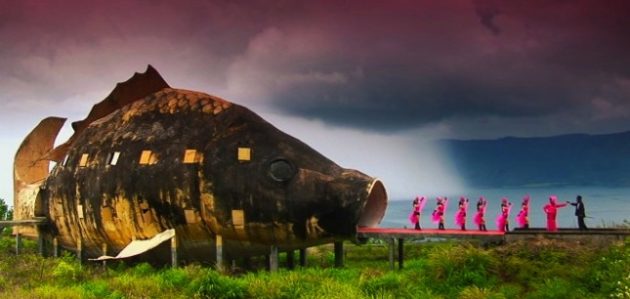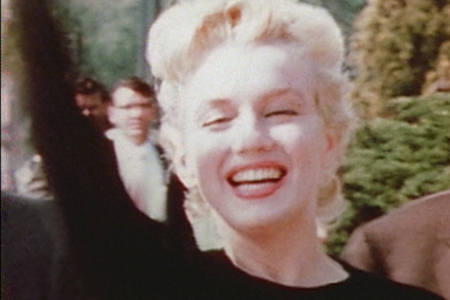Reacting to Re-Enactment: Which Toronto Documentaries Use The Controversial Technique Well − Which Don't

An unusual employment of re-enactment comes in Oscar-nominee Liz Garbus' latest film, Love, Marilyn, based on the contents of Marilyn Monroe's recently-discovered diaries and letters. Garbus turned to well-known actors, including Marisa Tomei and Glenn Close, to bring a new archive of the late actress' personal writings and other documents about her to life. Thankfully, Marilyn's contemporaries don't attempt to embody the bombshell. Furthermore, the actors are depicted in a very stylized, deliberate manner. While the result can sometimes be a bit bizarre — a dramatic reading of Marilyn's turkey recipe, for example — the approach in no way calls into question the authenticity of the source material. Instead, it helps to illuminate otherwise non-visual written work.
Increasingly, documentary filmmakers have used animation to solve some of the problems posed by re-enactments, notably, for instance, in the Oscar-nominated Waltz with Bashir. Clearly exaggerated, animation can supplement storytelling without being charged with inauthenticity. At TIFF, Marc Wiese's Camp 14: Total Control Zone, about a North Korean man who spent the first 20 years of his life in a labor camp; and Paul Saltzman's The Last White Knight, a profile of a KKK member who once assaulted the director in 1965, make significant use of animation to add visual depth to largely interview-driven projects. Weise is able to recreate the labor camp, emphasizing its hopelessness through a drab color palette, and providing the audience with a palpable sense of a location that would otherwise be unrepresentable. Animation in Saltzman's film is used more sparingly, bringing to life telling episodes of danger faced by civil rights organizers in the segregated South.
In other cases, TIFF docs made use of re-enactments in smaller ways. Shola Lynch's Free Angela and All Political Prisoners, an in-depth look at Angela Davis' time as an accused terrorist, is blessed with a remarkable treasure trove of powerful archival footage due to the worldwide attention that her case generated.For this reason, it's a head-scratcher why Lynch decided to include the few brief scenes of re-enactments that appear in the film. One, in particular, represents an amorous tryst between Davis and one of the Soledad Brothers, Black Panther George Jackson. It's not even appropriate to call it gratuitous, as it's presented in a fractured, non-prurient manner, but it adds virtually nothing to the film.
Jamie Kastner's The Secret Disco Revolution, a potentially interesting look at disco's role in the liberation of blacks, gays and women frequently cuts from archival footage to present animated vignettes of an imagined conspiracy of masterminds who were responsible for disco's rise to prominence. It's an initially cute idea that loses more and more steam each time it's trotted out.
Basil Tsiokos is a documentary features programming associate for Sundance, a programmer for DOC NYC, and a consultant to documentary filmmakers and festivals. He writes on docs daily at his blog what (not) to doc.
Follow Basil Tsiokos on Twitter.
Follow Movieline on Twitter.
Pages: 1 2


Comments
Hi there! I just wish to give a huge thumbs up for the great data you’ve here on this post. I will likely be coming again to your weblog soon.
hi,
can I ask something about reenactment?
I want to know deeperst about the meaning of reenactment in your perspective view? what is the focus point function in it? why it is include in the documentary?
tq.